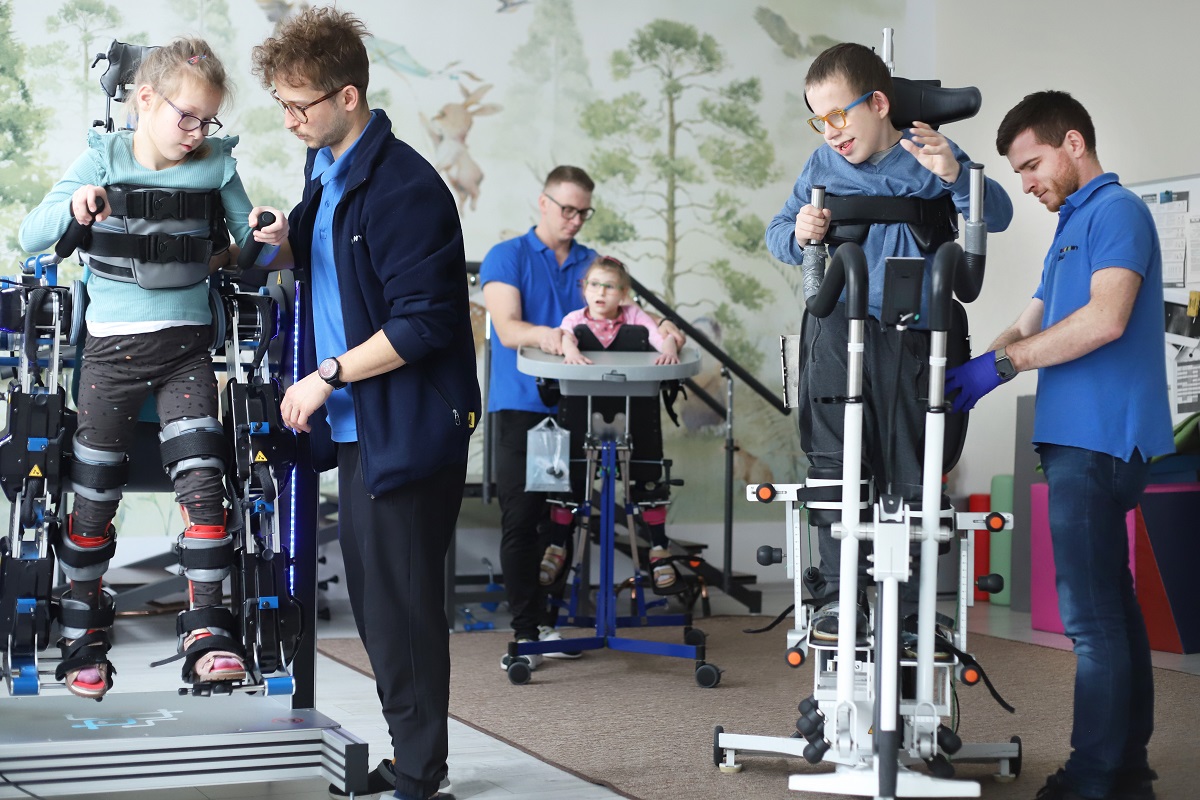Gait Turnout
Gait Turnout
Gait Turnout is a proprietary project of intensive improvement of motor function developed on the basis of several years of experience gained in working with neurological patients, using advanced rehabilitation and diagnostic equipment gathered at the Foundation Gait Laboratory.
During the course of the course we will take care of inhibition of abnormal movement patterns and integration of the whole body. Exercises performed are expected to positively influence the normalization of muscle imbalance and stimulate anti-gravity activities. Staying the patient in high positions is also expected to positively influence the proper functioning of other systems (e.g. digestive).
The turnout is addressed to children:
- with cerebral palsy;
- with conditions after injuries and surgeries of the locomotor system;
- with abnormal muscle tone;
- with muscular dystrophy;
- with spina bifida;
- with gait pattern abnormalities.

We begin the turnaround with a thorough interview with the patient, during which we discuss the reasons for the gait pattern disorder, the most significant limitations in the child's movement, and how the child has so far managed the high position on a daily basis. We examine the ranges of motion in the joints, perform a video gait analysis and a dynamometer platform test. We test the quality of muscle response in our patients with the modified Ashworth scale and the Tardieu scale. We individually create a therapy plan to set accurate and achievable goals.
Turnout also involves working to select the right orthopedic supplies and helping our patients select equipment that will give them new gait motor capabilities. We begin the turnout day with soft tissue therapy to free the child from a persistent pattern of abnormal tensions in the musculoskeletal system. In the next part of the class, we work on a selected function to improve gait quality. We use a treadmill with a weight-relief system for this, on which the patient can play interactive games to improve his coordination and balance reactions during a break in gait training. An important part of our turnout is training with Innowalk re-education and learning equipment. Our patients practice the correct gait pattern, step alternation, and strengthen strength and muscular capacity, which allows them to maintain proper joint mobility. This is an excellent opportunity and training for children who do not walk independently to experience dynamic verticalization.
We vary our therapy with training on the Galileo platform. The large range of vibration frequencies allows for individual approach to the problem of our charges.
Benefits for the child of participating in the turnout:
- improving gait pattern, coordination, balance;
- strengthening muscle strength of the trunk and lower limbs;
- increasing the range of mobility in peripheral joints;
- normalization of muscle tone;
- improving both dynamic and static balance;
- selection of orthopedic supplies and gait aids individually adapted to the child's needs.
Devices and therapeutic aids used during the turnout:
- Innowalk;
- Galileo vibration platform;
- dynamometer platform with a camera system for video analysis;
- therapeutic stairs;
- a treadmill with a weight-relief system;
- interactive games with an active suspension system;
- therapeutic stairs tailored to the patient's needs;
- mats, rollers, Theraband tapes, equivalent platforms;
- mirror that allows patient self-correction during exercise;
- therapeutic ladders;
- vest with adjustable weight.
Turnout details:
- 2 weeks - 10 working days (Monday to Friday);
- 2 hours per day - gait lab training (including 1 hour of work in Innowalk gait re-education equipment);
- 1 hour per day - NDT Bobath therapy;
- 1 diagnostic consultation - development of turnout goals;
- 1 consultation summarizing the turnout.
To sign up for paid rehabilitation services and additional information on participation in the classes, please call: 517 466 200 and email: rehabilitacja@kolorowyswiat.org
You are welcome!
Price list of rehabilitation services - click here










